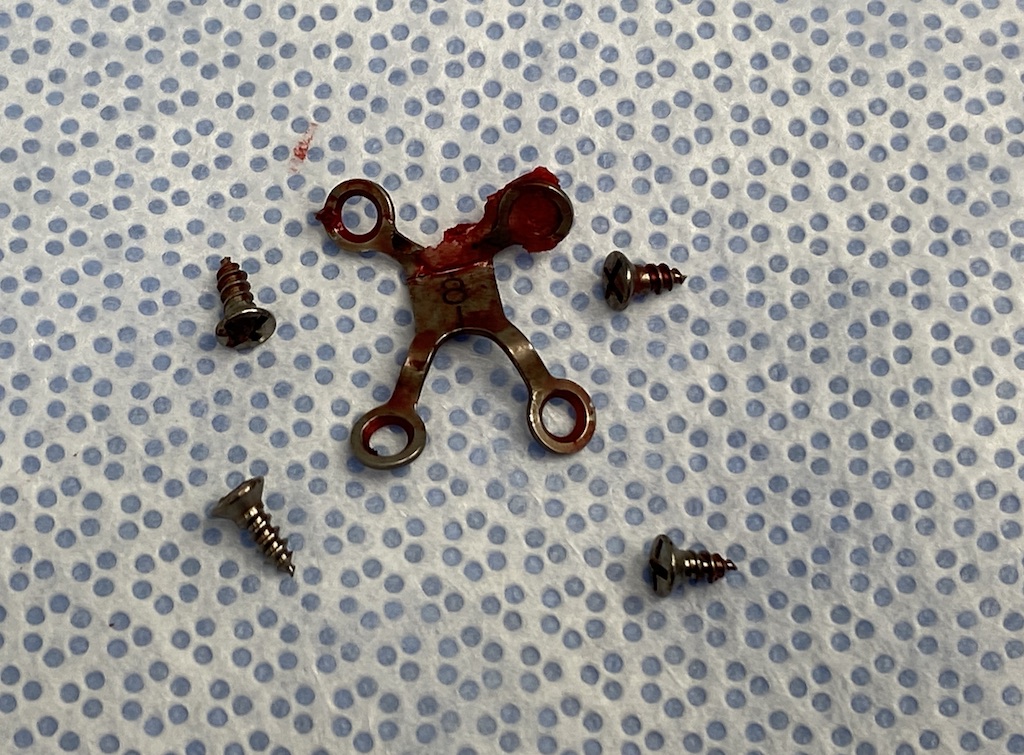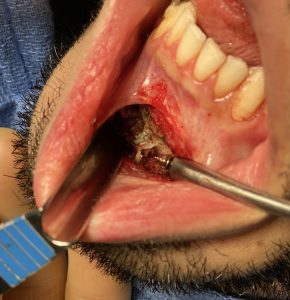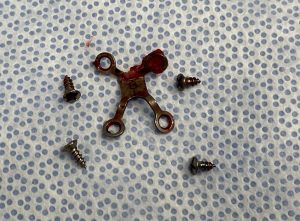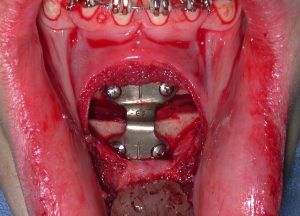
While the fixation hardware is necessary for good bone healing, patients often inquire about whether the metal hardware needs to be removed and, if so, when could that done.
There is no compelling medical need to remove metal hardware in the chin providing it is ‘asymptomatic’. The chin is not a functionally load part of the lower jaw so there is no risk of stress shielding or hardware loosening. To the contrary bony overgrowth of part or all of the hardware is common. That being said there are several reasons why patients may consider removal. If the lower lip feels tight or tethered hardware removal is the go to maneuver suggested by surgeons…although this rarely provides relief since that is usually not the source of the problem. Palpability, temperature sensitivity and the personal need to get rid of a foreign body after it has served its purpose are uncommon reasons for doing so.
The chin bone heals very quickly so the metal hardware could be removed as soon as three months after the surgery. Most surgeons, however, recommend six months since there is no pressing need for the removal surgery.
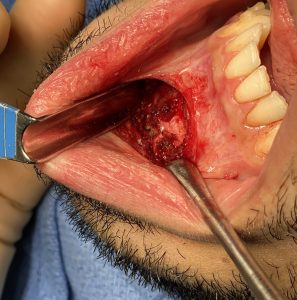
Dr. Barry Eppley
World-Renowned Plastic Surgeon

